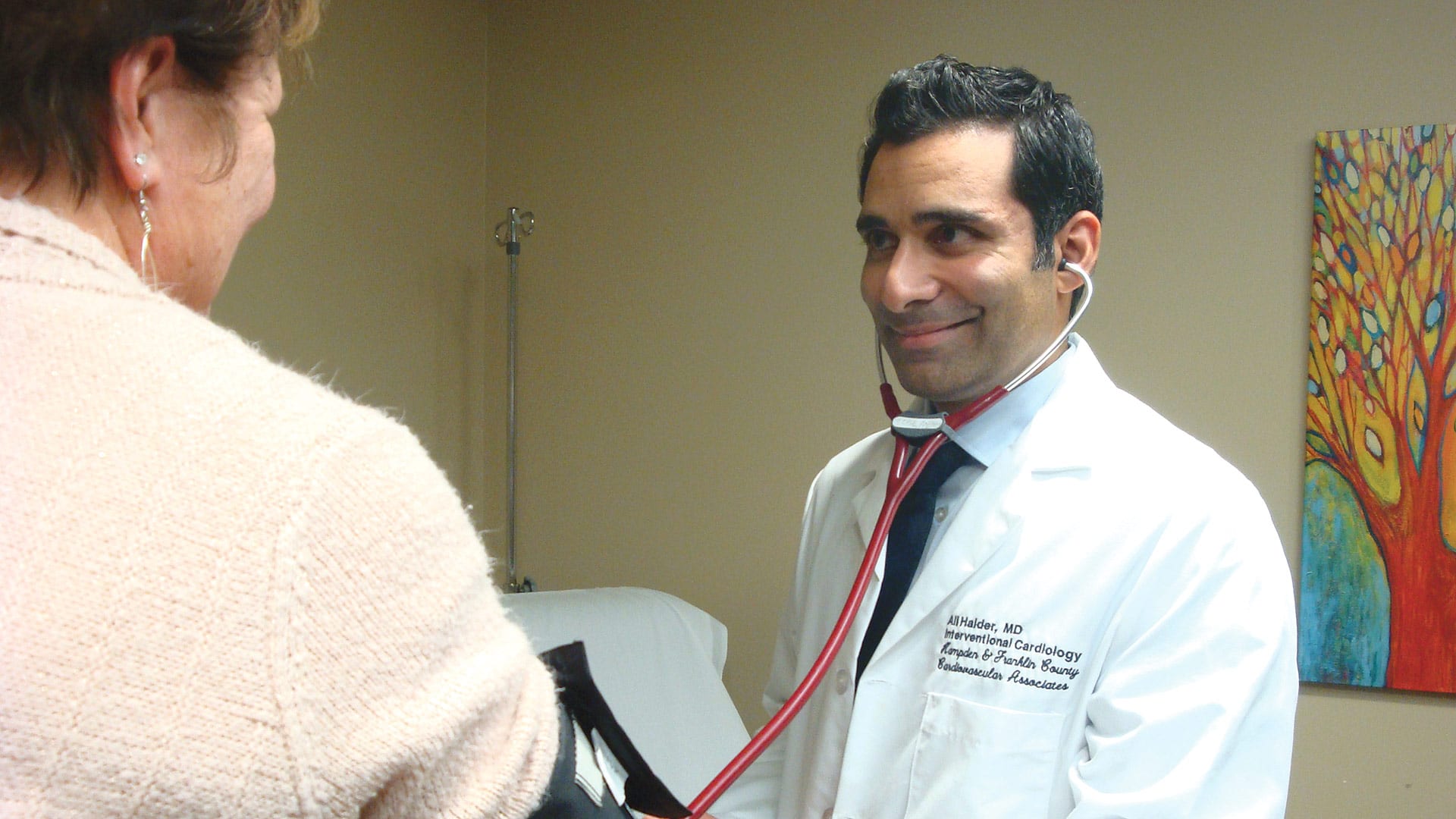A Leap of Progress SportsMetrics Helps Female Athletes Jump Higher, Not Harder
As a former bodybuilder, Jeffrey King knows a little something about sports injuries — and about making the wrong decisions when it comes to training.
As manager of Rehabilitation Services at Baystate Franklin Medical Center, he knows a lot about keeping others from making the same mistakes.
“That’s always a risk in any athletic, high-level type of sport, where you take your body to its limits,” King said. “I have all sorts of injuries, and I’m only 47. I did a lot of damage to myself in those years of professional bodybuilding. I trained hard … but now my mantra is ‘train smarter.’ Between all the training and straining, I wish I had someone coaching me when I was younger. Maybe I wouldn’t have listened anyway … but if I had the right coach, I think I would have trusted what he was saying.”
Many young female athletes over the years have similar regrets. For years, doctors and physical therapists have grappled with a significant problem in young women who were athletically inclined: a disturbingly high pattern of injuries to the anterior cruciate ligament of the knee.
“They’ve long recognized the incidence of injury in the female athlete, particularly ACL injuries, which occur at a rate two to 10 times greater than in males,” King said. “These are non-contact injuries — running down the field, making a cut, boom, they blow out their ACL.”
That trend, however, has also provided knowledge leading to breakthroughs in prevention. About a decade ago, researchers in Cincinnati studied the makeup of the female athlete to determine the reasons behind this injury trend, and developed from that research the concept of SportsMetrics. The result has been a dramatic dropoff in ACL and other injuries for athletes who use the system.
Making the Jump
A product of the Cincinnati Institute of Sports Medicine, SportsMetrics is the first training program scientifically proven to decrease serious knee ligament injuries in female athletes, its founders claim.
“This program trains females and teaches them a jump program to improve flexibility, strength, and also motor training,” King said. “It teaches women how to jump, shock-absorb, and land properly so as not to put these ligaments at risk. One of our local surgeons terms it a vaccination against sports injuries in women, and our health system has more or less adopted this program.”
In SportsMetrics, drills are used to teach the athlete to position the entire body safely when accelerating (jumping) or decelerating (landing). The selection and progression of these exercises are designed to instill correct form in simple jumping drills, and from there, to safely add sports-like movements such as single-foot hops and quick cuts.
Performing maneuvers with sound mechanics decreases the likelihood of an injury, proponents of the system say, and is also essential to maximizing sport performance – and no one, of course, is improving their skills if they’re sitting on the bench nursing a season-ending injury.
For a long time, experts have considered several different factors in the disparity of injury rates in male and female athletes, including structural theories, such as a woman’s wider pelvis, and hormonal theories, such as estrogen causing a collagen strength deficit and joint laxity. But the developers of SportsMetrics decided to focus on training techniques, since there’s little anyone can do about anatomical differences between men and women.
For example, males demonstrate relatively higher use of the hamstring in landing from a jump, which protects the knee ligaments. Conversely, female athletes most often demonstrate contraction of their quadriceps in a similar motion, and this contraction during knee flexion significantly increases strain on the ACL.
Therefore, when an athlete is slightly off-balance or must make a sudden stop or twist, and has insufficient muscle strength, coordination, and balance to react immediately — and women typically do have less muscle strength than men — there is an increased risk for a serious knee injury.
In the early development of SportsMetrics, the Cincinnati Institute of Sports Medicine determined that after a six-week conditioning program incorporating stretches, jump training, and strength and coordination exercises, female athletes had better leg strength and power than before, and attained coordination and ‘limb symmetry’ equivalent to that of male athletes the same age. Most importantly, they learned to decrease landing force on the knee after a jump, and their mechanics changed from stiff-legged landings to more stable, controlled actions — all while improving their jump height.
Passing the Baton
King, whose annual coaching clinics attract some 35 to 50 youth and high school coaches from around the region, noted that many sports medicine programs involve “athletes treating athletes,” since so many trainers and rehabilitation specialists were or are involved in sports themselves. As such, he said they are uniquely equipped to handle not only the physical side of training, but also understand the mental side.
In an arena marked by so much superstition and habit, he said — think Nomar Garciaparra’s extensive ritual of hand motions before stepping into the batter’s box on every single pitch — trainers must understand how to get into an athlete’s head to improve the way he or she works out and takes care of their body, he noted.
“I think that not only the technology but also the awareness is greater now than it was 20 years ago,” King said. “I remember when I played sports, the coach was just a nice guy who didn’t know anything about training, but he had a good heart and liked to help young people.
“Now,” he continued, “a lot of the coaches who come to our clinics are really savvy about what they’re passing on to their kids. They’re learning about these issues, and they know there’s a lot more to sports than just going out there and playing.”
As a result, many have gotten on board with SportsMetrics, and “there has been something like a 60{06cf2b9696b159f874511d23dbc893eb1ac83014175ed30550cfff22781411e5} reduction in ACL injuries for those females who participated,” King noted.
That impact often goes well beyond the enjoyment an athlete gets from playing. Avoiding injuries also improves an athlete’s psyche and, when considered in terms of college scholarships, can significantly boost future earning potential from sports.
SportsMetrics, said King, is only one manifestation of how training has evolved in recent years for both men and women – a trend manifested by the fact that strength and conditioning coaches, always a staple of professional and collegiate sports, have only recently become commonplace in high school.
“I have two daughters,” he said, “and if they play sports, they’re going to participate in this SportsMetrics jump training, without a doubt.”
And that might be the biggest endorsement he could make.



